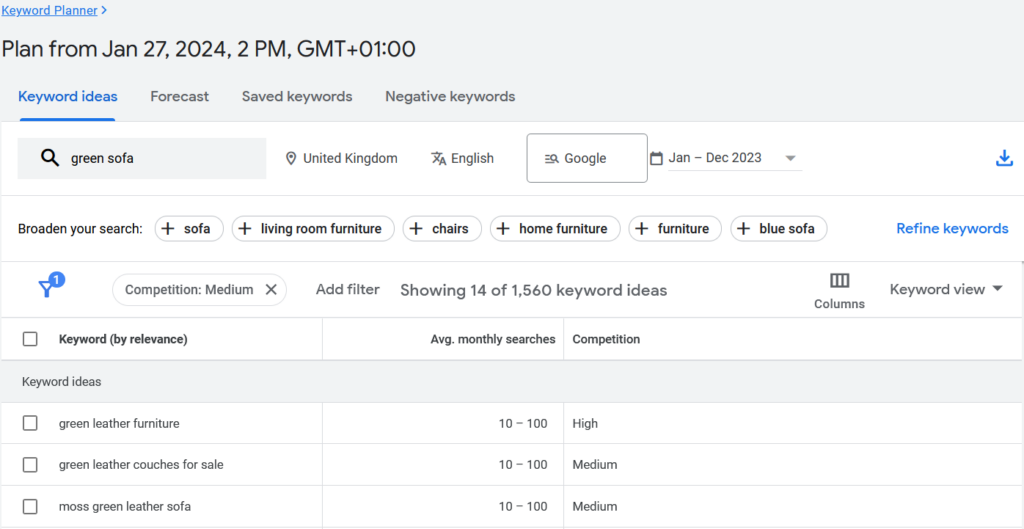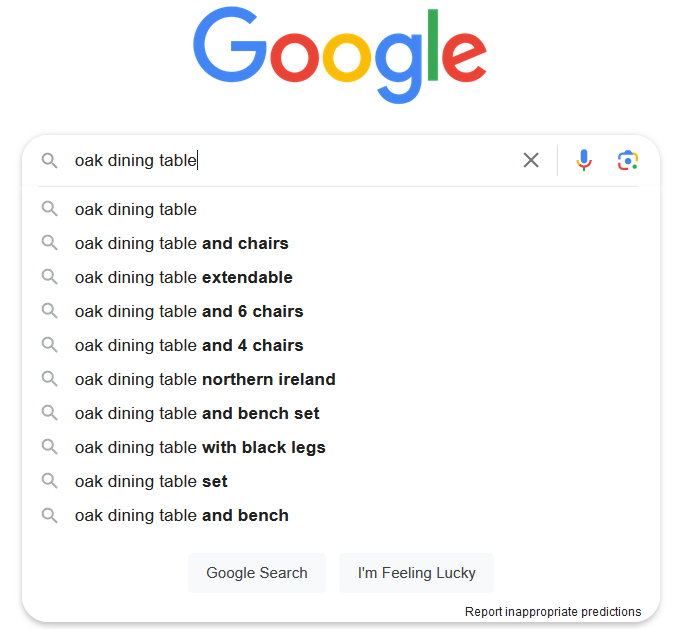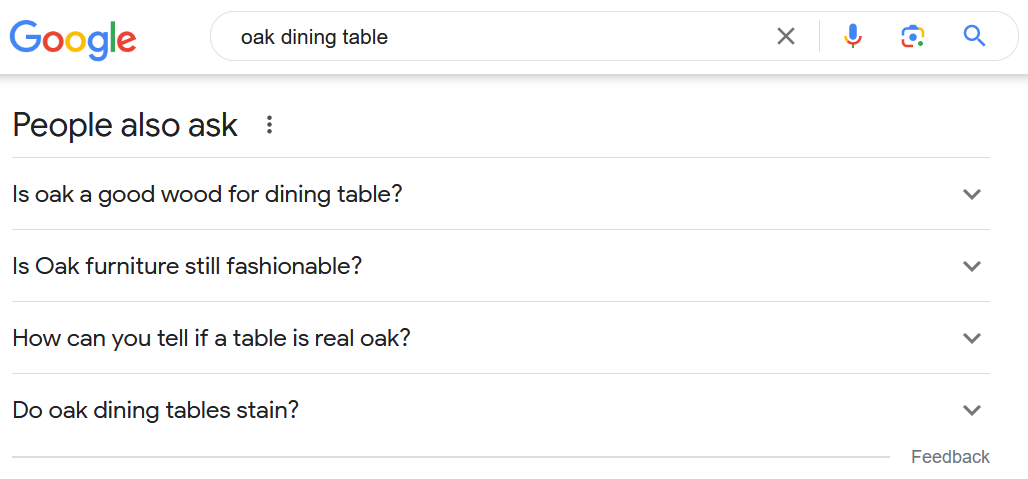Not all keywords are created equal.
Some are almost impossible to rank for, because there is so much competition, and there are keywords with less competition, and therefore they are easier to rank for in SERPs.
Long tail keywords are usually the latter.
As such, using them can help you get to the top of Google’s search results page, which let’s face it, is where we all want to be.
Here we explain exactly what they are, why they are beneficial, and how to use them to your advantage.
What is a Long Tail Keyword?
It’s a common misconception that long tail keywords are simply ‘long keywords’.
Although, in general, long tail keywords are a long string of words, this is not where the name comes from. ‘Long tail’ refers to the way keyword competition and popularity look on a graph.
Head keywords, such as ‘furniture’, ‘puppies’, or ‘football’, have extremely high popularity and search volume, causing a spike at the beginning of a graph. However, they actually only account for a small percentage of all search queries.
Long tail keywords, such as ‘painted oak furniture for sale in Lincoln’, or ‘female labrador puppies fully vaccinated’, have much lower search volume, however, these types of keywords account for a much larger proportion of total search queries.
On a graph, this looks like a long, low tail, hence the term ‘long tail keywords’.
Examples of Long Tail Keywords
Long tail keywords are specific.
They are usually longer than just a few words and are searched by users who know exactly what they are looking for.
Imagine you’re just starting to think about what type of furniture you want in your new house. To begin with, you might search ‘furniture styles’ or ‘modern furniture styles’ for inspiration. These are short keywords or head keywords. Then, once you’ve got a clear idea of the types of furniture you like, your search might get more specific. You might look for ‘industrial style living room furniture’, or more specifically, ‘black leather sofa with industrial metal legs’.
These are long tail keywords.
These are a specific phrase or string of words that emerge when a user is looking for precise information.
Benefits of Long Tail Keywords
Optimising your content for long tail keywords is a great way for smaller companies to find themselves at the top of Google search results.
Short keywords, that have a huge amount of competition, are almost impossible to rank for, because big businesses with seemingly unlimited funds dominate them.
Long tail keywords can significantly boost your organic traffic, and help bring your target audience to you.
Less Competition
They have less competition, and as a result, this means they are easier to rank for.
If you want your traffic to increase (who doesn’t?), then long tail keywords can make this happen.
Since fewer people are searching for long tail keywords, and there is less content optimising for them, you stand a better chance at making it to the top of SERPs.
More Qualified Leads
You might be wondering why you want to rank for terms that fewer people are searching.
Well, it’s quite simple (hooray!).
Even though fewer users are searching for long tail keywords, these users are actually more valuable than the users searching for short keywords. This is because, typically, a user searching for a long tail keyword knows exactly what they want, and is likely in a position to make a decision.
It’s about quality over quantity.
If your website ranks at the top of Google for the short keyword ‘furniture’, then yes, of course, you’re going to get an enormous amount of traffic.
But what proportion of that traffic are users that are likely to make an immediate purchase?
As a user, if you’re searching for ‘furniture’ then you’re probably just casually exploring products, a bit like a window shopper. In a real-world scenario, this user is the type of potential customer who will tell the sales assistant they are “just browsing”, when asked if they need any help. By comparison, a user searching a long tail keyword, such as ‘stained oak dining table with steel legs’, knows exactly what they are looking for, and there’s a good chance they’re going to make a purchase if they find it. In the real world, this customer is going to be taking measurements of the table and asking the sales assistant about delivery costs when they are approached in a store.
By targeting users who are inputting specific search queries into search engines, you’re attracting more qualified leads to your website. Your traffic levels might be lower than those websites that rank for short keywords, but your conversion rate will be impressive.
Lower Ad Cost
They cost significantly less per click when running ad campaigns, because of supply and demand.
Every furniture retailer wants to get noticed by users searching ‘green sofa’, but much fewer are trying to get noticed for ‘moss green leather sofa’.

If you run an ad campaign using Google Adwords, choose a relevant long tail keyword that’s going to help you get higher ad rankings without paying a premium. In doing so, you’re improving your return on investment.
How to Find Long Tail Keywords
SEO tools are invaluable for getting suggestions, but you can also find them in other ways.
For example, enter your search term into the Google search bar and see what suggestions come up. Not all of these will be long tail keywords, but it’s a good place to start.

You can also scroll to the bottom of SERPs and look at similar search queries that other users have made. These often make for excellent suggestions.

To Summarise
Optimising your website for long tail keywords is a solid way to improve your ranking in search engine results, while also honing in on users who are specifically looking for the kind of information, products, or services you provide.
Users who know what they want are more likely to be serious about making a decision, which means a boost in your conversion rate.
For help with keyword research or content marketing, get in touch.
- Canonicalization: The Dos and Don’ts of Canonical Tags - May 27, 2024
- On-Page SEO: The Ultimate Guide - May 25, 2024
- The Only WooCommerce SEO Tutorial You Need in 2024 - May 23, 2024